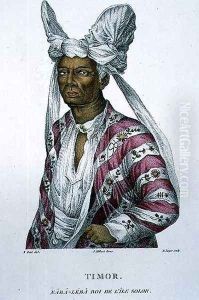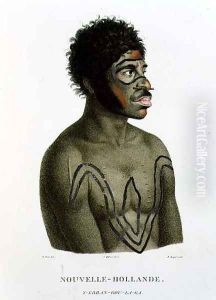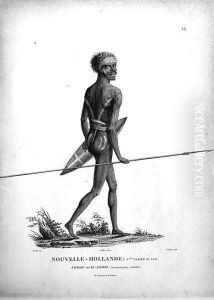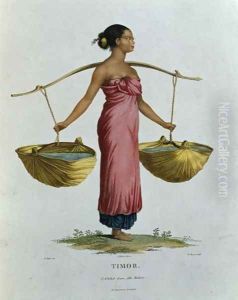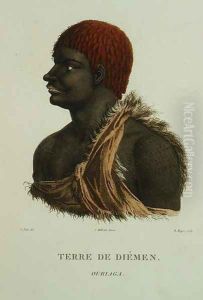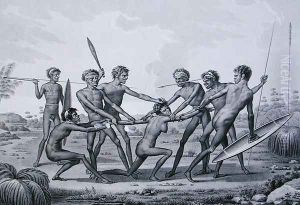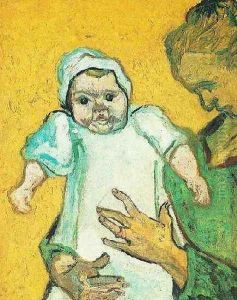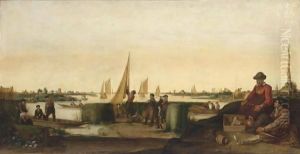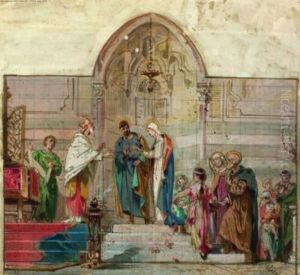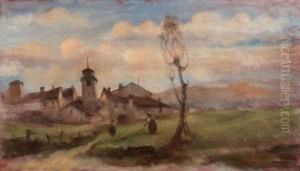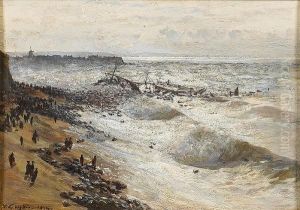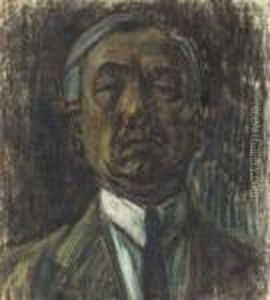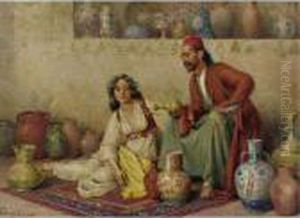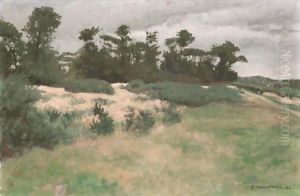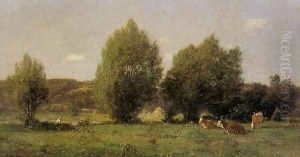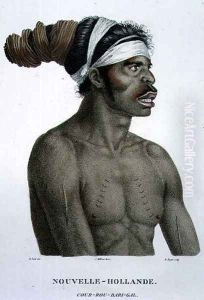





Cour-Rou-Bari-Gal, a native of New Holland, plate 18 from Voyage of Discovery to Australian Lands, engraved by B. Roger, pub. 1800-04
-
About Reproduction
Discover the allure of art with our faithful reproduction of "Cour-Rou-Bari-Gal, a native of New Holland, plate 18 from Voyage of Discovery to Australian Lands, engraved by B. Roger, pub. 1800-04", originally brought to life by the talented N. Petit. Unlike posters or prints, our hand-painted oil painting breathes an unique sense of depth and texture into your space. Every detail, every stroke, and every texture is meticulously recreated, paying the perfect homage to N. Petit and his artistic vision.
Owning this piece is more than just decoration - it's a statement of your refined taste in art. Let the vibrant colors and intricate details of this replica serve as a daily reminder of the beauty in our world. Elevate your decor and appreciate the richness of art with our replica of this masterpiece.
-
Painting Description
"Cour-Rou-Bari-Gal, a native of New Holland, plate 18 from Voyage of Discovery to Australian Lands" is an engraving created by B. Roger and published between 1800 and 1804 by N. Petit. This artwork is part of a larger collection that documents the early European exploration and encounters with the indigenous peoples of Australia, then known as New Holland. The engraving is a significant historical artifact that provides insight into the European perspective and representation of Aboriginal Australians during the late 18th and early 19th centuries.
The engraving depicts Cour-Rou-Bari-Gal, an Aboriginal man from the region now known as New South Wales. The image is notable for its detailed portrayal of the subject's physical appearance, including traditional body markings and attire, which were of great interest to European audiences at the time. Such depictions were often intended to satisfy the curiosity of Europeans about the 'exotic' lands and peoples encountered during voyages of discovery.
The "Voyage of Discovery to Australian Lands" was part of a broader movement of scientific and exploratory expeditions sponsored by European powers, particularly France and Britain, during the Age of Enlightenment. These expeditions aimed to map unknown territories, collect specimens of flora and fauna, and document the cultures and practices of indigenous populations. The publication of these voyages often included detailed illustrations and engravings, which served both scientific and popular interests.
The work of B. Roger and N. Petit in this context is significant as it reflects the early stages of ethnographic documentation. However, it is also important to recognize that such representations were filtered through the lens of European colonial attitudes and often did not accurately or fully capture the complexities of indigenous cultures. The engraving of Cour-Rou-Bari-Gal, while valuable as a historical document, must be understood within this broader context of colonialism and its impact on the portrayal of indigenous peoples.
Overall, "Cour-Rou-Bari-Gal, a native of New Holland, plate 18 from Voyage of Discovery to Australian Lands" stands as a testament to the early encounters between Europeans and Aboriginal Australians, offering a glimpse into the ways in which these interactions were recorded and disseminated to the wider world.
-
Lead Time & Shipping
When you order this oil painting replica, it typically takes 2-3 weeks to paint. If the artwork is more complex, it might need a little more time to ensure the best quality. Once it's ready, we'll send you a photo for your approval. After you give the green light, we'll ship it to you for free.
-
Return & Refund
We believe in the quality of our hand-painted oil painting reproductions, and your satisfaction is our priority. If for any reason, you are not completely satisfied with your purchase, we offer a 45-day return policy. You can return your artwork within 45 days of receipt and receive a full refund. Please note that the artwork must be returned in the original packaging and in the same condition as it was received.





